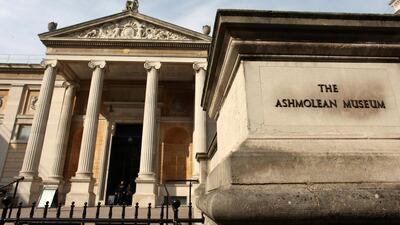The Indian government has requested that a British museum return a bronze sculpture that it claims was stolen from a temple in the 1960s.
The 15th-century figurine of Saint Tirumankai Alvar was bought from Sotheby’s auction house by the University of Oxford's Ashmolean Museum in 1967.
The almost-60-centimetre sculpture depicts the Tamil poet, who was believed to have lived in the 8th or 9th century and is credited with having created a number of works, such as Periya Thirumozhi, holding a sword and shield.
A formal request for restitution of the idol was made by the Indian high commission in London on Friday, February 14.
The statue is believed to have been stolen from the temple of Sri Soundarrajaperumal, in the Indian state of Tamil Nadu, in the 1960s.
A police report from the state show "unambiguously shows that the original idol has been stolen and replaced with a fake one, and that the stolen idol is the same one that is presently with the Ashmolean", a spokesperson for the Indian high commission told The Art Newspaper.
The request for restitution comes after the Ashmolean Museum advised Indian authorities that it had concerns about the origins of the statue, following the uncovering of new evidence.
According to The Guardian, a picture taken in the temple in 1957 by an independent scholar shows the statue in situ.
The high commission spokesperson thanked the museum “for taking proactive steps in this matter and hopes that other museums would follow the example in dealing with suspected stolen pieces of our cultural heritage”.
A spokesperson from the Ashmolean told The Guardian the statue was sold to the museum from the collection of a "Dr JR Belmont", according to the Sotheby's catalogue.
“We currently have no indication of how the bronze entered his collection and we are continuing to investigate with the support of the Indian high commission.”


